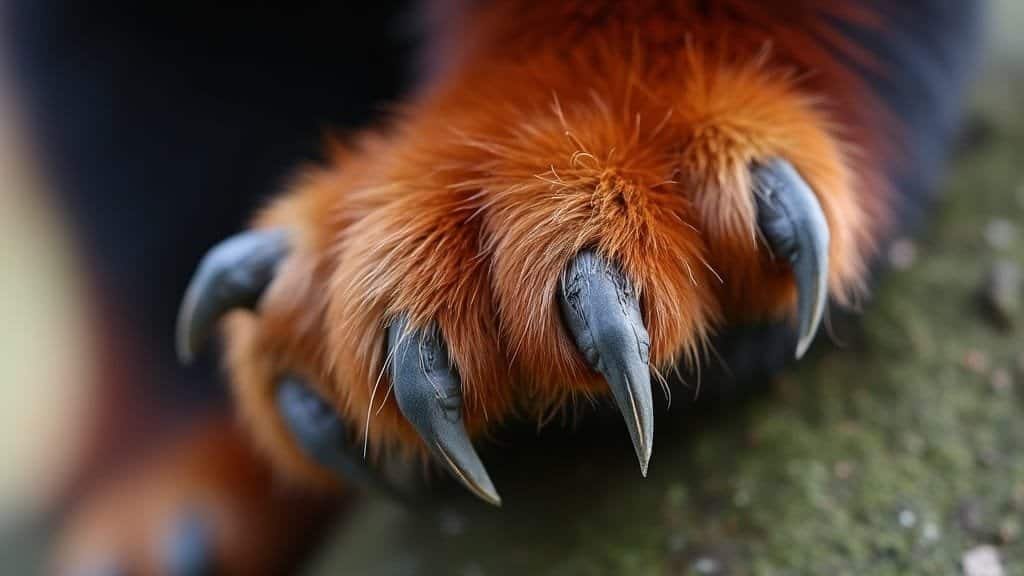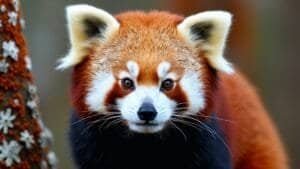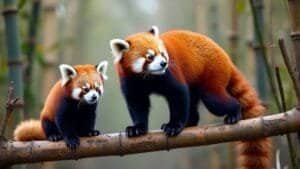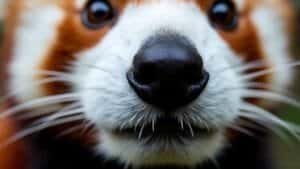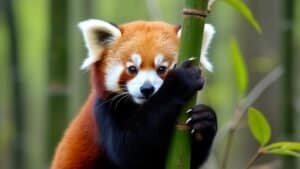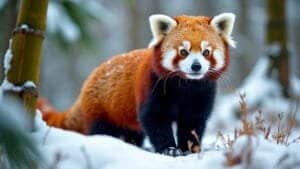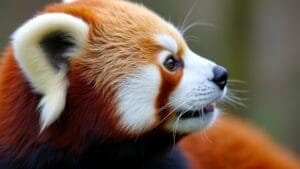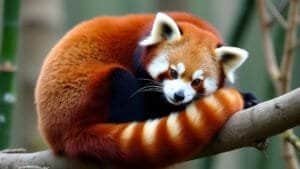The red panda’s claws are a defining feature that sets them apart from many other animals. These semi-retractable claws are specially adapted to support their arboreal lifestyle, allowing them to climb trees, handle bamboo, and even descend trunks headfirst—a rare skill among mammals
Unlike fully retractable claws found in cats or the fixed claws of raccoons, the red panda’s claws offer a unique combination of functionality and versatility. In this article, we’ll explore the physical characteristics of red panda claws, how they are used for survival, and the evolutionary traits that make them essential for thriving in the dense forests of the Himalayas
Unique Physical Characteristics of Red Panda Claws
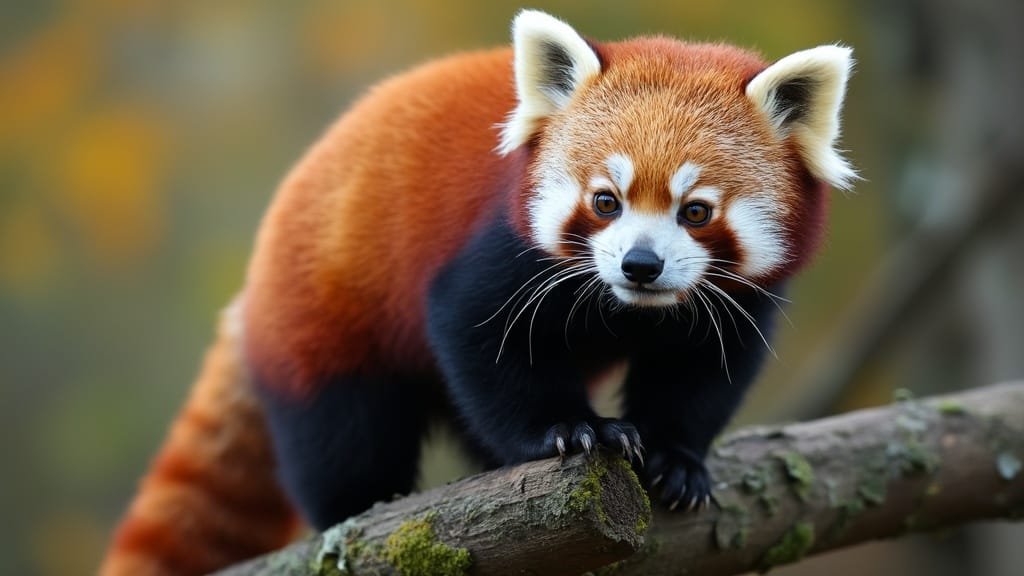
The claws of the red panda are distinct in both structure and function, designed specifically to aid in their arboreal lifestyle and survival. These adaptations make their claws versatile tools for climbing, grasping, and navigating their forested habitats
Anatomy and Semi-Retractable Features
Red pandas have sharp, curved claws that are semi-retractable. This means the claws remain partially extended at all times, unlike the fully retractable claws of cats. This constant extension provides the red panda with immediate access to their claws for climbing or grasping without the need to unsheathe them
Each claw is deeply rooted in their toes, providing stability and strength for gripping tree bark and branches. The curvature of the claws acts like a hook, enhancing their ability to latch onto surfaces and maintain balance in their arboreal environment. Roberts and Gittleman (Mammalian Biology, 2020) highlighted that this feature is essential for species that rely on precise climbing techniques to avoid predators and access food sources
Comparison to Fully Retractable Claws
While cats can fully retract their claws to protect them from wear and keep them sharp, red pandas’ semi-retractable claws prioritize functionality over preservation. This difference reflects their reliance on frequent climbing and gripping in their arboreal habitat
The partial extension ensures that their claws are always ready for immediate use, whether for climbing a tree trunk, navigating narrow branches, or gripping bamboo stalks. This contrasts with raccoons, which also climb but lack the sharpness and precision provided by semi-retractable claws
Durability and Adaptation for Constant Use
Red panda claws are designed for durability, allowing them to withstand the wear and tear of daily climbing and foraging. The claws’ robust structure ensures they remain effective even with frequent use on rough tree bark and other abrasive surfaces
Research by Wei et al. (Journal of Mammalogy, 2014) noted that the combination of durability and semi-retraction makes red panda claws highly specialized for the demands of arboreal living. This adaptation allows them to maintain a consistent grip and perform tasks like handling bamboo without compromising their climbing ability
For more insights into the physical characteristics of red panda claws, visit the Marwell Zoo’s red panda page
Functions of Red Panda Claws
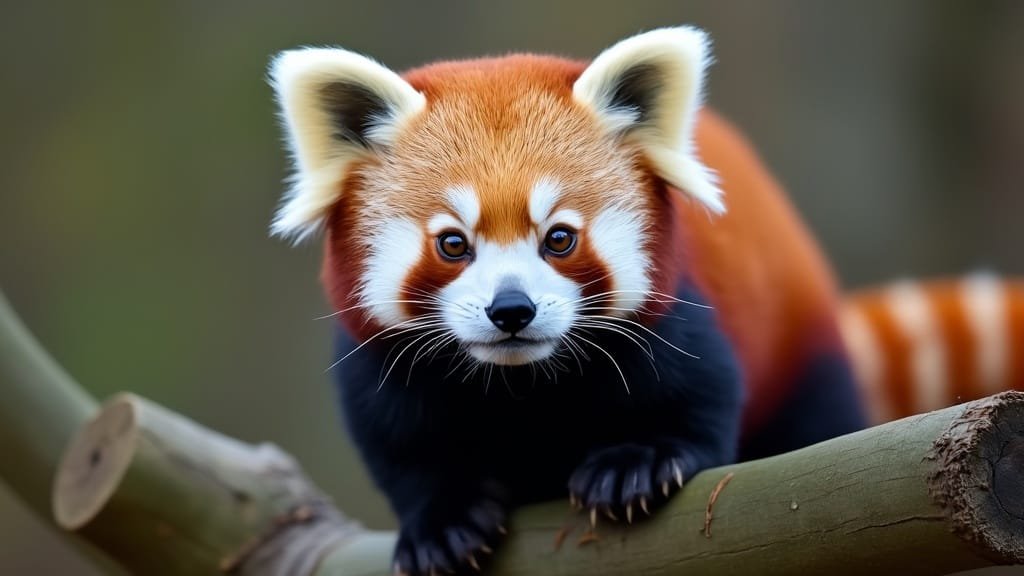
Red panda claws are essential tools that serve multiple purposes, from climbing and feeding to self-defense. These versatile features enable red pandas to navigate their complex environment and adapt to the challenges of life in the forested regions of the Himalayas
Climbing and Navigating Arboreal Habitats
Red pandas spend most of their time in trees, and their claws are perfectly suited for this arboreal lifestyle. The sharp, curved structure of the claws allows them to grip tree bark securely, helping them climb vertically and traverse narrow branches with stability
One of the red panda’s unique skills is its ability to descend trees headfirst, a rare trait among mammals. This is made possible by their semi-retractable claws combined with flexible ankles that rotate outward. The claws dig into the bark, providing a secure grip as they descend. Research by Yonzon et al. (Biological Conservation, 1987) highlighted the importance of this adaptation for escaping predators and accessing food located at different heights in the forest canopy
Feeding and Handling Bamboo
Red pandas use their claws to grasp bamboo stalks while feeding. The claws act as anchors, allowing them to manipulate bamboo with precision. This is particularly important given that bamboo forms the majority of their diet and requires efficient handling to strip leaves and chew the stalks
Unlike primates, which rely on their hands for most feeding tasks, red pandas rely on the combination of their claws and front paws. Roberts and Gittleman (Mammalian Biology, 2020) observed that this feeding strategy is a key adaptation, ensuring red pandas can efficiently process bamboo while conserving energy
Defense Mechanism Against Predators
Although not primarily used for combat, red panda claws can serve as a defense mechanism. When threatened, red pandas may stand on their hind legs and use their claws to swipe at predators. This behavior, combined with their sharp claws, can deter smaller predators or at least create enough of a distraction for the red panda to escape
Their arboreal lifestyle also allows them to use their claws to climb quickly out of harm’s reach. This dual purpose of climbing and defense makes their claws a critical survival tool in a predator-rich environment
For additional details on how red pandas use their claws for survival, visit the IFAW article on red pandas
Evolutionary Adaptations of Red Panda Claws
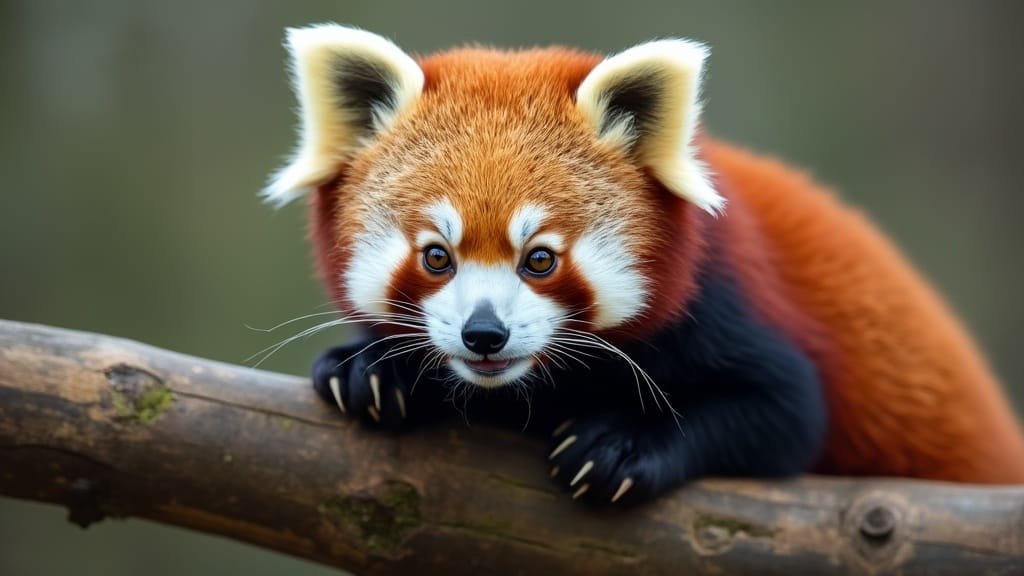
The unique structure and functionality of red panda claws are a result of millions of years of evolution, allowing them to thrive in their cold, forested, and arboreal habitat. These claws reflect the red panda’s specialization for climbing, feeding, and survival in the challenging Himalayan environment
Why Are Red Panda Claws Semi-Retractable?
Red pandas have semi-retractable claws as a compromise between functionality and maintenance. This feature allows them to always keep their claws ready for climbing and gripping surfaces without the need to unsheathe them, as fully retractable claws in cats require
The partial retraction also helps reduce wear on the sharp tips while still enabling constant use for arboreal activities. Wei et al. (Journal of Mammalogy, 2014) explained that this adaptation is particularly suited for animals that climb frequently and rely on their claws for tasks beyond locomotion, such as feeding and defense
Differences Between Red Panda Claws and Other Mammals’ Claws
Compared to other arboreal mammals, such as raccoons or sloths, red panda claws are distinct in their versatility. Raccoons, for instance, lack semi-retractable claws and rely more on their hands for manipulation, while sloths have long, hook-like claws designed solely for hanging
Unlike fully retractable claws in cats, which are specialized for hunting, red panda claws are designed for climbing and handling bamboo. This difference reflects the red panda’s unique ecological niche as an herbivorous climber. Roberts and Gittleman (Mammalian Biology, 2020) noted that the semi-retractable claws of red pandas combine traits seen in both predators and arboreal herbivores, making them uniquely versatile
Importance of Claws in an Arboreal Lifestyle
Red pandas’ claws are essential for navigating their three-dimensional forest habitat, where climbing is critical for accessing food, finding shelter, and avoiding predators. The sharp, curved design provides the grip needed to move confidently through the tree canopy
In addition, the claws enhance their ability to descend trees headfirst, a skill that sets them apart from many other mammals. This ability is not just practical but also an important survival mechanism, allowing red pandas to retreat quickly in the face of danger
Over generations, these features have been refined to meet the demands of their environment, ensuring that red pandas are equipped to survive in their high-altitude, bamboo-filled habitats. For more on the evolutionary adaptations of red panda claws, refer to the Toronto Zoo’s red panda page
